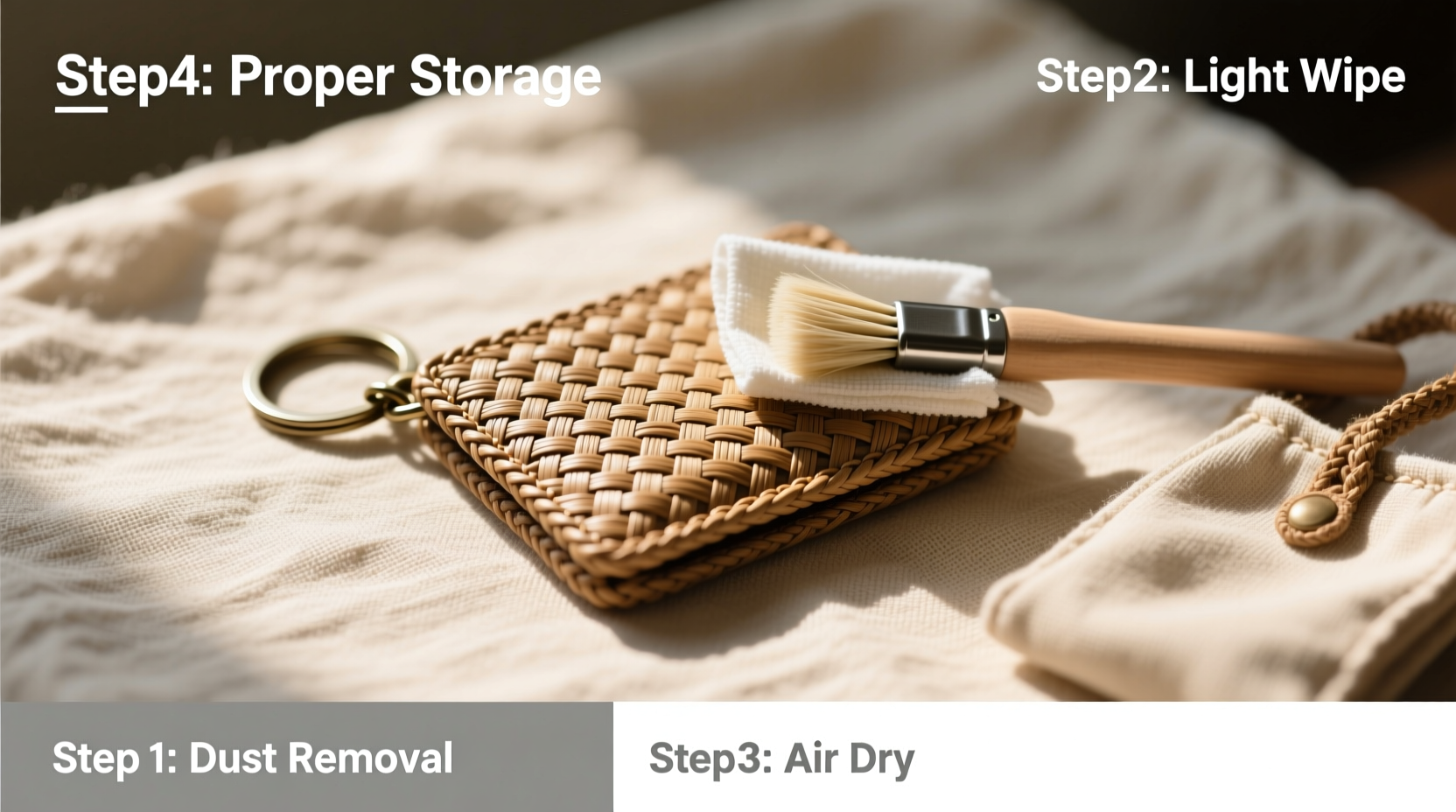Woven texture keychain wallets have become a staple in minimalist fashion—compact, stylish, and functional. Crafted from materials like nylon, polyester, or sometimes recycled fabrics, their intricate weave adds visual appeal while offering surprising durability. However, daily exposure to keys, pockets, moisture, and dirt can degrade the material over time if not properly cared for. Unlike leather or metal accessories, woven textiles require specific cleaning techniques that preserve both integrity and appearance. This guide delivers a comprehensive, safe method for cleaning and maintaining your keychain wallet, ensuring it remains a trusted companion for years.
Why Proper Care Matters for Woven Keychain Wallets

These small accessories endure more stress than most realize. They’re frequently jostled in pockets, exposed to sweat, rain, and friction from keys. Over time, this leads to fraying, discoloration, odor buildup, and weakened stitching. The tightly woven structure traps dust and oils, making deep cleaning essential but delicate. Using improper methods—like soaking in harsh detergents or scrubbing aggressively—can unravel fibers or distort the shape.
Regular maintenance prevents premature wear and keeps the wallet looking fresh. A well-maintained piece not only performs better but retains its aesthetic value, whether it’s a designer accessory or a handmade favorite.
“Textile-based accessories are often overlooked in routine care, yet they benefit immensely from gentle, consistent attention.” — Lena Patel, Sustainable Accessory Designer
Step-by-Step Cleaning Process
Cleaning a woven keychain wallet requires patience and precision. Follow this timeline to ensure safety and effectiveness.
- Remove all contents: Take out cards, cash, or any inserts. If your wallet has a metal clasp or internal frame, inspect for loose parts before proceeding.
- Dry brush surface debris: Use a soft-bristled toothbrush (preferably unused) to gently loosen dirt trapped between weaves. Brush in the direction of the weave to avoid snagging.
- Spot test cleaning solution: Mix one drop of mild liquid detergent (like Woolite or dish soap) with two tablespoons of lukewarm water. Apply a small amount to an inconspicuous area (e.g., inside fold) and wait 5 minutes. Check for color bleeding or fiber distortion.
- Clean with damp cloth: Dip a microfiber cloth into the solution, wring thoroughly until just damp, and gently wipe the surface. Focus on stained areas with light circular motions.
- Tackle stubborn stains: For oil-based marks, add a pinch of baking soda to the solution. For ink, use a cotton swab lightly dabbed with rubbing alcohol (70% isopropyl), applied sparingly and immediately wiped off.
- Air dry completely: Lay flat on a clean towel in a well-ventilated area away from direct sunlight or heat sources. Do not use a hairdryer or radiator.
- Final inspection: Once dry, brush lightly again to restore texture. Check seams and closures for signs of wear.
Maintenance Checklist for Longevity
To keep your keychain wallet in optimal condition between cleanings, follow this monthly maintenance checklist:
- ✅ Remove lint and debris with a dry brush or compressed air
- ✅ Wipe down surface with a dry microfiber cloth
- ✅ Rotate usage if you own multiple wallets to reduce strain
- ✅ Inspect stitching and edges for early signs of fraying
- ✅ Store in a breathable fabric pouch when not in use
- ✅ Avoid contact with sharp keys or abrasive surfaces
- ✅ Reapply fabric protector spray (if compatible) every 3 months
Do’s and Don’ts: Material-Specific Guidelines
Not all woven wallets are created equal. Below is a comparison table outlining best practices based on common materials.
| Material | Do’s | Don’ts |
|---|---|---|
| Nylon/Polyester Blend | Use mild soap, spot clean, air dry | Avoid bleach, high heat, machine washing |
| Recycled PET Fabric | Gentle wiping, UV protection, store flat | Don’t expose to prolonged moisture |
| Cotton Weave | Clean quickly after soiling, rotate use | Never soak; prone to shrinking and mildew |
| Hybrid (Fabric + Silicone Trim) | Clean fabric and silicone separately with appropriate tools | Don’t let water pool at material junctions |
Real-World Example: Recovering a Neglected Wallet
Jamal had used his black woven keychain wallet daily for ten months. It developed a faint odor, darkened near the edges, and began shedding tiny fibers. Instead of replacing it, he followed the cleaning steps outlined here. After dry brushing and spot cleaning with a soap-water mix, he noticed the grime lifting from the weave. He avoided rinsing and instead blotted with a dry towel, then left it overnight in a shaded room. Two days later, the wallet looked significantly refreshed. He now cleans it every six weeks and stores it in a linen pouch. Over a year later, it remains fully functional and visually clean—a testament to preventive care.
Frequently Asked Questions
Can I machine wash my woven keychain wallet?
No. Machine washing subjects the weave to agitation and spin cycles that can cause warping, fraying, or seam failure. Always opt for hand cleaning with a damp cloth.
How often should I clean it?
Light surface wiping should be done weekly if carried daily. A deeper clean using the method described is recommended every 4–6 weeks, depending on usage and environmental exposure.
Is it safe to use waterproofing spray?
Only if the product is specifically designed for fabric accessories and free from silicone or heavy solvents. Test on a small area first. Overuse can clog fibers and alter texture.
Protect Your Investment with Consistent Care
Your woven texture keychain wallet blends utility with personal style. Treating it with regular, thoughtful maintenance ensures it continues to serve you without compromise. From avoiding aggressive cleaners to mastering the art of spot treatment, each action contributes to extended lifespan and sustained appearance. These small habits compound over time, preserving not just the item itself, but the convenience and confidence it brings to your everyday carry.









 浙公网安备
33010002000092号
浙公网安备
33010002000092号 浙B2-20120091-4
浙B2-20120091-4
Comments
No comments yet. Why don't you start the discussion?